Wind-Cold invading the Lungs
The information provided here is not a replacement for a doctor. You shouldn't use it for the purpose of self-diagnosing or self-medicating but rather so you can have a more informed discussion with a professional TCM practitioner.
At a glance
Preliminary reading: What is a pattern? The Lungs in Chinese Medicine The concept of Wind The concept of Cold
Key attributes
Chinese name: 风寒犯肺 Pinyin name: Fēng Hán Fàn Fèi
Pattern nature: Full
Causes
Precursor patterns: Wind-Cold Exterior-Cold
Common causes: External Wind and Cold
Diagnosis
Common symptoms: Fever Sneezing Headaches Runny nose Body aches and six other symptoms
Pulse type(s): Tight (Jin), Floating (Fu)
Tongue description: Thin and white coating
Treatment
Treatment principle: Expel Cold, release the Exterior, stimulate the descending and diffusing of Lung Qi.
Common formulas: Ma Huang Tang Ge Gen Tang Xin Yi San and one other formulas
Pathology
The Defensive Qi layer of the Lungs is invaded by the external Wind-Cold. The battel between these two takes place and gives rise to fever. This is similar to how the immune system reacts to the external bacterial or virus according to the Western Medicine. Please be aware that there aren't always fever every time, especially if the Wind-Cold is comparatively weak or the Defensive Qi doesn't response to it. According to TCM, 'fever' doesn't necessarily means actual temperature increasing, it can also mean Heat related symptoms of the body.
The descending and dispersing of Lung Qi can be greatly disturbed if the Lung's Defensive Qi is obstructed by the external Wind. It can lead to symptoms like blocked or runny nose, coughing and sneezing.
The circulation of Defensive Qi in the space between skin and muscles is also impaired so that symptoms like headache, body aches or aversion to cold happen.
Causes
Precursor patterns: Wind-Cold invading the Lungs can derive from Wind-Cold Exterior-Cold
External Wind and Cold : Patients can get this pattern by exposing to external Wind and Cold. It can be actual cold and windy environment or artificial ones like air conditioned rooms or refrigerated storage spaces. Please be aware that the strength of a person's Defensive Qi has a great impact on if a person catch this pattern or not. It is like the immune system according to the Western Medicine. Therefore, someone can still get a bad cold in hot summer.
Diagnosing Wind-Cold invading the Lungs
Diagnosing a pattern in Chinese Medicine is no easy feat and should be left to professional practitioners. In particular one has to know how to differentiate between different types of pulses and tongue coatings, shapes and colors as well as learn to read from a long list of seemingly unrelated symptoms.
Pulse type(s): Tight (Jin) or floating (Fu)
Tongue description: Thin and white coating
Main symptoms: Fever Sneezing Headaches Runny nose Body aches Itchy throat Blocked nose Aversion to cold Shortness of breath White and watery sputum Coughing and wheezing with copious sputum
Diagnosis commentary: Key characteristic symptoms of this pattern are the aversion to cold, sneezing and Floating pulse.
Treating Wind-Cold invading the Lungs
Treatment principle
Expel Cold, release the Exterior, stimulate the descending and diffusing of Lung Qi.
Herbal formulas used to treat Wind-Cold invading the Lungs

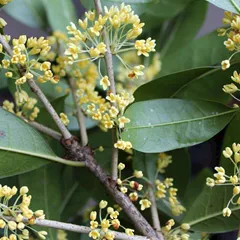
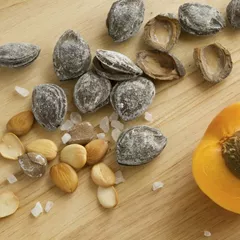
The top herbs in Ma Huang Tang are Ephedra (Ma Huang), Cinnamon Twigs (Gui Zhi) and Apricot Seeds (Xing Ren)
Ma Huang Tang
Source date: 220 AD
Number of ingredients: 4 herbs
Key actions: Releases exterior cold. Treats wheezing.
Formula summary
Ma Huang Tang is a 4-ingredient Chinese Medicine formula. Invented in 220 AD, it belongs to the category of formulas that clear Wind-Cold.
Besides Wind-Cold invading the Lungs, Ma Huang Tang is also used to treat Wind-Cold or Greater Yang Attack of Cold.


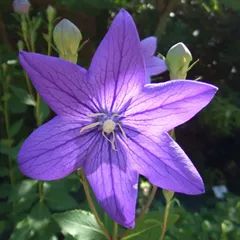
The top herbs in Zhi Sou San are Aster Roots (Zi Wan), Stemona Roots (Bai Bu) and Platycodon Roots (Jie Geng)
Zhi Sou San
Source date: 1732 AD
Number of ingredients: 7 herbs
Key actions: Transforms Phlegm and stops coughing. Disperses the Exterior. Spreads the Lung Qi.
Formula summary
Zhi Sou San is a 7-ingredient Chinese Medicine formula. Invented in 1732 AD, it belongs to the category of formulas that transform Phlegm and extinguish Wind.
Besides Wind-Cold invading the Lungs, Zhi Sou San is also used to treat Phlegm-Fluids in the Lungs.
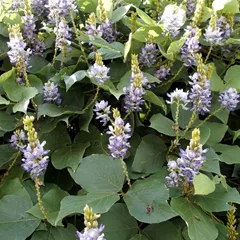


The top herbs in Ge Gen Tang are Kudzu Roots (Ge Gen), Ephedra (Ma Huang) and Cinnamon Twigs (Gui Zhi)
Ge Gen Tang
Source date: 220 AD
Number of ingredients: 7 herbs
Key actions: Releases the Exterior and muscle layer. Forms Body Fluids.
Formula summary
Ge Gen Tang is a 7-ingredient Chinese Medicine formula. Invented in 220 AD, it belongs to the category of formulas that clear Wind-Cold.


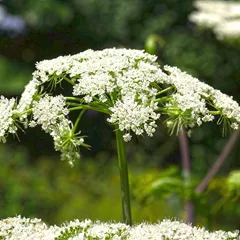
The top herbs in Xin Yi San are Biond’S Magnolia Flowers (Xin Yi Hua), Bugbane Rhizomes (Sheng Ma) and Chinese Lovage Roots (Gao Ben)
Xin Yi San
Source date: 1253 AD
Number of ingredients: 9 herbs
Key actions: Disperses Wind-Cold. Unblocks the nasal passages.
Formula summary
Xin Yi San is a 9-ingredient Chinese Medicine formula. Invented in 1253 AD, it belongs to the category of formulas that dredge and disperse External Wind.
Consequence patterns
If left untreated Wind-Cold invading the Lungs can lead to Lung Heat
If left untreated Wind-Cold invading the Lungs can lead to Phlegm Heat in the Lungs
External Wind-Cold impairs the diffusing and descending function of the Lungs, causing Body Fluids overflowing out of their normal vessels. Eventually it becomes Oedema, which settles between skin and muscles on the upper part of the body such as face and hands.
